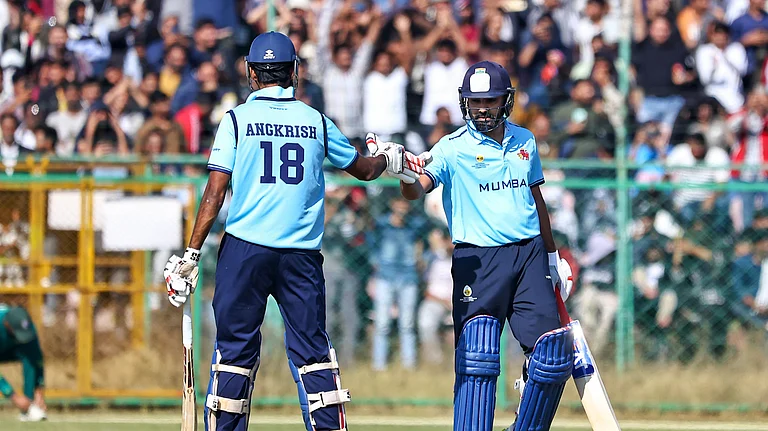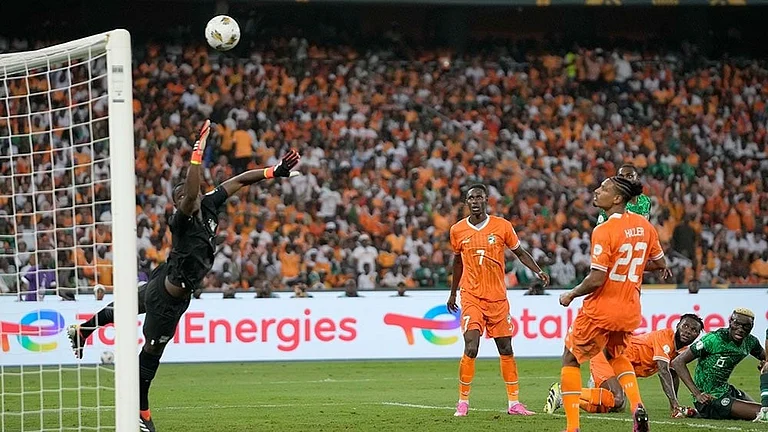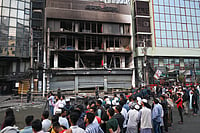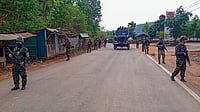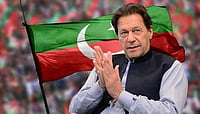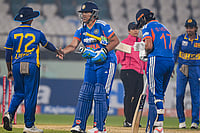According to Ly Thuch, a top official in Prime Minister Prince Norodom Ranariddh's Cabinet: "If Pol Pot is confirmed dead, it will be good for Cambodia as it will divide the Khmer Rouge leadership, and the group will weaken. He was worse than Hitler." Ly Thuch's parents were killed by the Khmer Rouge during their genocidal rule (1975-79). Virtually every Cambodian family had at least one relative killed by them.
But just who was Pol Pot? His real name was Saloth Sar, but he adopted Pol Pot as his revolutionary name—following in the footsteps of communist leaders Lenin, Stalin, Tito and Ho Chi Minh, who had changed their names to conceal their real identities.
Born near Kompong Thom, about 90 km from Phnom Penh, Pol Pot's father was a rich farmer and his mother was well-known for her charity. After failing an entrance exam to a local college, he sailed to Paris in 1949 and took courses in radio-electricity, but earned no formal degree. In Paris, his romance with communism bloomed. He became a member of the French Communist Party in the early 1950s, and later fell under the spell of Chairman Mao Tse-Tung, the Chinese leader whose brutal Cultural Revolution he admired and desired to replicate in Cambodia.
Pol Pot read not just communist tracts; he studied French poets Hugo, Rimbaud and Verlaine. His writings, however, reflected none of his love for poetry. When Prince Sihanouk was ousted in a coup in 1970, Pol Pot rejoiced and wrote in an article: "Monarchy is an unjust doctrine, a malodorous running sore that just people must eliminate." At the time, he fancied himself as a latter-day Robespierre or Danton.
On his return to Phnom Penh in 1950, he joined the Vietnamese Indo-Chinese Communist Party in its struggle to oust the French colonial rulers from Vietnam, Cambodia and Laos. Pol Pot's rise began with the removal of Sihanouk in a coup. With Vietnamese help, Pol Pot set up the headquarters of his force whom Sihanouk had derisively referred to as the 'Khmers Rouges', or Red Cambodians, and launched his reign of terror to set up an agrarian society. Pol Pot overthrew the pro-US government of Lon Nol in 1975, and his Khmer Rouge government of Democratic Kampuchea came to power using military force, and aided by Vietnam. But by 1977, he broke with Vietnam, whom he and the Chinese viewed as 'revisionists' and impure communists.
Soon after taking power, Pol Pot began Mao-style purges and mass killings, creating a living hell for Cambodians. He ordered the murder of intellectuals, doctors, professors, journalists, actors and dancers. The vast population of about 10 million starved as the army ransacked the villages. Scorpions were let loose on women's breasts, hot irons inserted into the rectums of men, and babies' skulls dashed against tree trunks. The torturers were often young Cambodian boys recruited and brainwashed by Pol Pot to slake his thirst for blood.
Pol Pot's 'Kampuchea' was bizarre. He banned money, outlawed business, closed the press, and blew up the Central bank. Phnom Penh, once a balmy French-style capital, became a ghost town.
In 1977, his forces began attacking Vietnamese border villages. Ultimately, Hanoi sent its army to overthrow Pol Pot in 1978-79. His regime disintegrated before the unstoppable Vietnamese, and he lived, and apparently died, the life of a guerrilla in Cambodian jungles, having failed to realise his dream of returning to power.
Many Cambodians were disappointed by the news of his death, as they would have preferred that he lived to face a Nuremberg-type war crimes trial likely to be conducted soon. Genocide investigations are currently being carried out by Yale University academics funded by a US Department of State grant. The academics say they have unearthed documents that reveal Pol Pot personally authorised mass killings and burials in open Nazi-style graves.
Two weeks before Pol Pot's reported death, Cambodian Secretary of State for Defence E.K. Sereywath told this reporter in Phnom Penh that the strength of the Khmer Rouge has been reduced to as little as 4,000 fighters, down sharply from about 50,000 when Pol Pot led them to power in 1975.
But how long can a rump Khmer Rouge maintain their rule over a few remote areas that add up to about 5 per cent of Cambodian territory? Says Sereywath: "To completely destroy them is difficult. It will take a few more years to reduce their threat. But the problem is they fight a guerrilla war. Even 10 guerrillas are still a force."
The death of Pol Pot follows a successful government campaign to engineer defections which depleted guerrilla ranks by 8,000 fighters over the last two years. And so, the last traces of the reign of terror are slowly being erased. But, much as they would like to get on with their lives, it may not be easy for Cambodians to erase the memory of the Pol Pot years.







